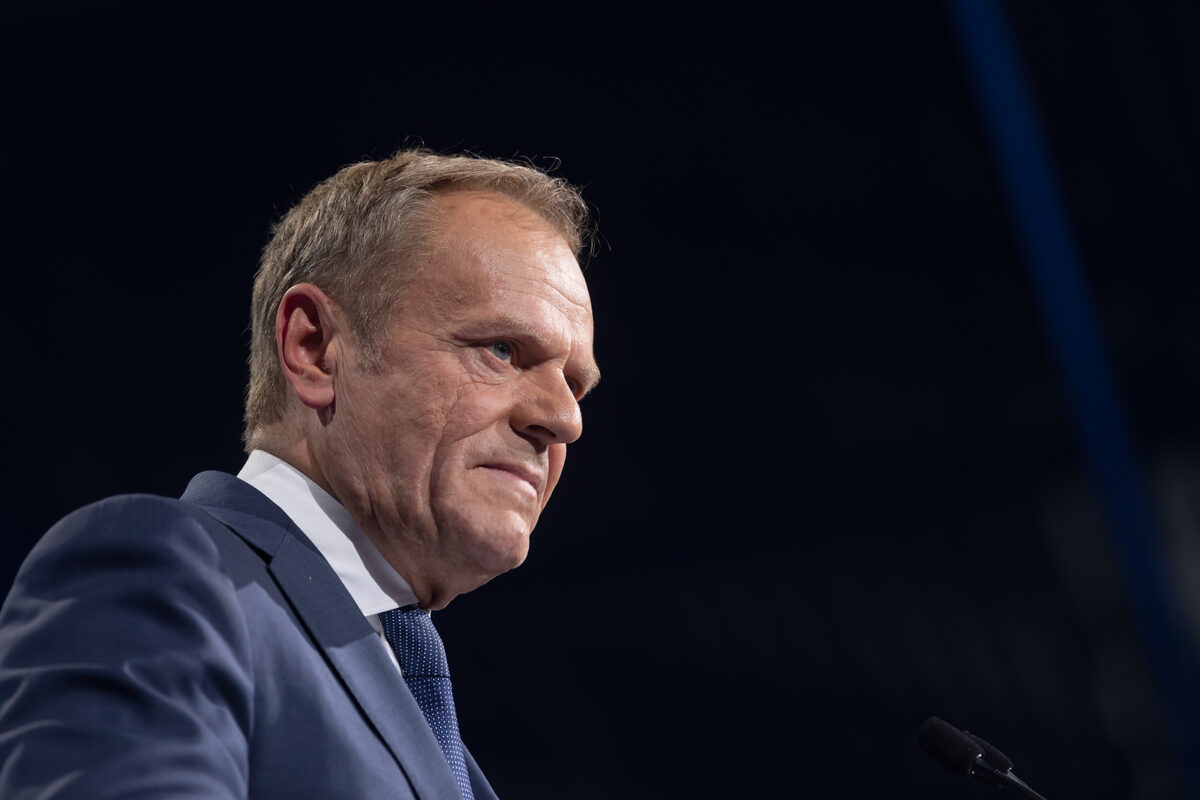The Civic Coalition of Prime Minister Donald Tusk will be sending 21 MEPs to Brussels following the weekend’s European elections, out of Poland’s total of 53. The Civic Coalition won a clear victory on June 9, ending a decade of uninterrupted electoral wins for the right-wing nationalist Law and Justice (PiS) party, which ruled Poland from 2015 to 2023.
With six more seats than it won in 2019, Civic Coalition will strengthen European People’s party (EPP) group, while its victory also demonstrated its clear advantage over its government coalition partners: the centre-right Third Way and the Left. Third Way (Polska 2050+PSL) received 6.91 per cent of the vote, translating to three seats, joining the Renew group, while the Left garnered 6.30 per cent, also resulting in three seats, joining the S&D group.
The three groups formed Poland’s current government following national parliamentary elections late last year.
For PiS, defeat. Since 2014, the party had garnered the most votes in 10 consecutive elections—local, parliamentary, presidential, and European. At the weekend, PiS obtained 36.16 per cent of the vote, over nine percentage points less than in the previous European elections (45.38 per cent). It gives PiS 20 seats in the European Parliament, seven fewer than in the previous term. PiS MEPs will nevertheless strengthen the European Conservatives and Reformists group.
The far right is also gaining strength in Poland. The Confederation received 12.08 per cent of the vote, securing six seats. In the previous elections, it did not enter the European Parliament, while in the 2014-19 term, it had just two MEPs. The far right achieved a significantly better result in the European elections than in the parliamentary elections, where it received 7.16 per cent of the vote. In the European Parliament, it will likely join the Identity and Democracy (ID) group, a new far-right formation, or remain unaffiliated with any political group.
Voter turnout was 40 per cent, five percentage points lower than in 2019 and significantly lower than the historically high turnout in the October 2023 parliamentary elections, which stood at 74.38 per cent.
The youngest voters were the least enthusiastic. Of those aged 18-29, only one in four cast their ballots. In the 2023 parliamentary elections, 70 per cent of this age group voted. Among voters over 50, nearly one in two eligible voters participated in the European elections.
Among the young, the far-right eurosceptic Confederation was the most popular party, followed by the pro-EU Civic Platform. The oldest voters, over 60, prefer PiS, with the Civic Platform in second place. The dominance of older voters in the turnout reinforces the over-twenty-year ‘duopoly’ of Donald Tusk and Jarosław Kaczyński’s parties in Polish politics.
A strengthened Tusk
Liberal parties, the centre-right, and the left combined took 51.8 per cent of the vote. Parties considered far-right in Western Europe, PiS and Confederation, together received 48 perc pent. The eurosceptic right successfully mobilizes voters around issues of security and migration, aided by current events in the country.
The election campaign in Poland, as in most countries, was nationally focused. In the week before the elections, the public debate was dominated and public opinion divided by the issue of state actions at the border with Belarus. Public opinion was shaken by the news of the death of a 21-year-old soldier, stabbed in the chest by a migrant through a border barrier. The media also reported that the prosecutor’s office was investigating soldiers who allegedly fired warning shots towards migrants.
Since 2021, Belarus and Russia have enabled a migration route to the EU through Belarus as a form of destabilising Europe. Poland’s response, de facto accepted by the EU, has been to militarise the border and carry out pushbacks of migrants, which are against international law.
The end of the European Parliament campaign signals the beginning of the unofficial presidential election campaign, set to take place next year. That election will determine the Tusk’s government’s ability to govern effectively. Currently, the government is often blocked by the threat of a veto from President Andrzej Duda, who will not be able to run for re-election.
The European elections will further strengthen the Civic Platform and Prime Minister Tusk within the government. This may intensify already evident conflicts within the coalition over issues such as abortion liberalisation and social policy. Snap elections are highly unlikely, as Tusk could form a new government only by creating a diverse ‘pro-democracy’ coalition.
Not everyone at PiS will be disappointed
At PiS, former Prime Minister Mateusz Morawiecki can be pleased, as his associates won many seats in the European Parliament over the party’s ‘old guard’. This reinforces his claim to the political succession after Kaczyński steps down, although the party’s founder is still very much active in politics.
Some important PiS politicians, who feared accountability for the abuse of office, will find refuge in the European Parliament. Among them are Mariusz Kamiński and Maciej Wąsik, who were pardoned by President Duda for abuse of office during the first PiS government.
Daniel Obejatek, former CEO of PKN Orlen, the largest company in Central and Eastern Europe, will also enjoy MEP immunity. He has been avoiding appearances before a parliamentary investigative commission and the prosecutor’s office as a witness, hiding in Budapest, possibly fearing charges against him.
The Confederation will send its most controversial politician, Grzegorz Braun, to Brussels and Strasbourg. Braun gained global notoriety in December when he extinguished Hanukkah candles in the Polish parliament using a fire extinguisher. He is known for his anti-Semitic, anti-Ukrainian, and pro-Russian statements. Less exposure in Poland may help the Confederation soften its image domestically as a pro-low taxes, anti-immigration, younger generation party.
Overall, the outcome of the European elections in Poland will strengthen both the EPP and the far right in the European Parliament.
On the national level, it shows that Tusk’s party, after half a year in power, still enjoys significant support from its voters, despite not implementing any comprehensive reforms.
However, it is evident that PiS, despite being weakened, could potentially regain its losses in the future. The Left only wins in its metropolitan heartlands, while blue-collar workers prefer PiS or the Confederation.
What’s clear is that there is significant potential to engage young voters who do not want to vote for the far-right. However, the current parties seem unable to do so.







